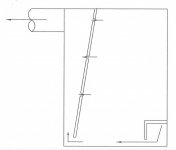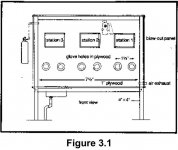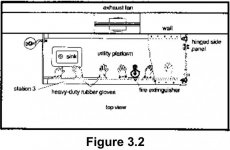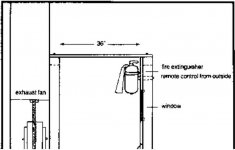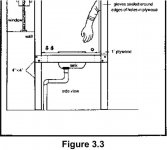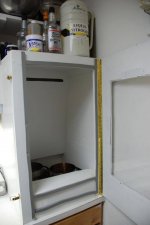I have always tried to be as safe as possible, and to be honest, the more dangerous (ether, methanol, pentane, hexane) solvents have scared me, mainly due to vapor fears.
So, I am going to build a DIY lab fume hood and would love some feedback. Here is the scale of what I am trying to do:
https://www.grainger.com/product/ICI-Fume-Hood-45MK56
This has a lot of good details:
https://www.baylor.edu/ehs/index.php?id=92585
I am just getting started and considering all design options at this point. Basic idea is this:
Welded tube steel frame
Stainless steel sheet for interior walls
Minimal control panel with light, fan on/off, fan speed
Simple tubing access/connections/valves for vacuum, chiller & nitrogen
I will be posting more details as I progress, but for now I have a few questions about exhausting to start:
For a myriad of reasons, including the safety of others, I would like to minimize the output of fumes to as little as possible. I read that activated carbon seemed to be the preferred method of capturing these vapors. How effective would a Phresh inline filter (https://growershouse.com/phresh-inline-filter-6in) be at removing ether, methanol, pentane and hexane? How long (much vapor in ml) would it last for? Is there a more efficient method of vapor removal?
I already have a Hyper Fan Digital Mixed Flow 8 inch - 710 CFM with speed controller (https://growershouse.com/hyper-fan-8in-710-cfm) that I would like to use, as the speed controller is very precise and easy to integrate into hood. If I had one or more inline carbon filter between hood and fan, do you think this fan would be safe for those solvents above?
Just to be clear, inline carbon filter(s) would be directly attached to hood vent and fan would pull air through system and then vent outside.
Appreciate any insights! Should be a fun project...
WFF
So, I am going to build a DIY lab fume hood and would love some feedback. Here is the scale of what I am trying to do:
https://www.grainger.com/product/ICI-Fume-Hood-45MK56
This has a lot of good details:
https://www.baylor.edu/ehs/index.php?id=92585
I am just getting started and considering all design options at this point. Basic idea is this:
Welded tube steel frame
Stainless steel sheet for interior walls
Minimal control panel with light, fan on/off, fan speed
Simple tubing access/connections/valves for vacuum, chiller & nitrogen
I will be posting more details as I progress, but for now I have a few questions about exhausting to start:
For a myriad of reasons, including the safety of others, I would like to minimize the output of fumes to as little as possible. I read that activated carbon seemed to be the preferred method of capturing these vapors. How effective would a Phresh inline filter (https://growershouse.com/phresh-inline-filter-6in) be at removing ether, methanol, pentane and hexane? How long (much vapor in ml) would it last for? Is there a more efficient method of vapor removal?
I already have a Hyper Fan Digital Mixed Flow 8 inch - 710 CFM with speed controller (https://growershouse.com/hyper-fan-8in-710-cfm) that I would like to use, as the speed controller is very precise and easy to integrate into hood. If I had one or more inline carbon filter between hood and fan, do you think this fan would be safe for those solvents above?
Hyper Fans are designed and built with many features that increase longevity, reduce operating costs, and drastically lower heat output.
With a Next Generation "Multi Phase" motor that uses up to half the power of traditional EC or DC motors. The internal large sized, self lubricating ball bearings ensure smoother operation, less heat friction and increased lifespan, extremely quiet, long lasting and very reliable.
Hyper Fan combines Laminar Blade Design and Stator Technology inspired by the modern jet engine, to reduce noise, increase airflow and create the highest static pressure performance of any fan in it's class.
The included speed controller can adjust fan speed from 30% to 100%. It is detachable from the fan and independent from the power cord.
Hyper Fans are in a class of their own with innovative features, benefits, value and backed with a 5 year warranty... these vibration-free fans are truly one of best on the market.
Uses about half the power as traditional fans.
Lightweight aluminum housing is one-third the weight of comparable steel bodied fans.
Compact and easy to install.
Universal mounting positions – can be mounted in any position allowing maximum flexibility during installation.
Heavy-duty 6/8/10 mm bearings, versus commonly used 4 mm bearings, ensure smoother operation and increased longevity of the fan.
Just to be clear, inline carbon filter(s) would be directly attached to hood vent and fan would pull air through system and then vent outside.
Appreciate any insights! Should be a fun project...
WFF

